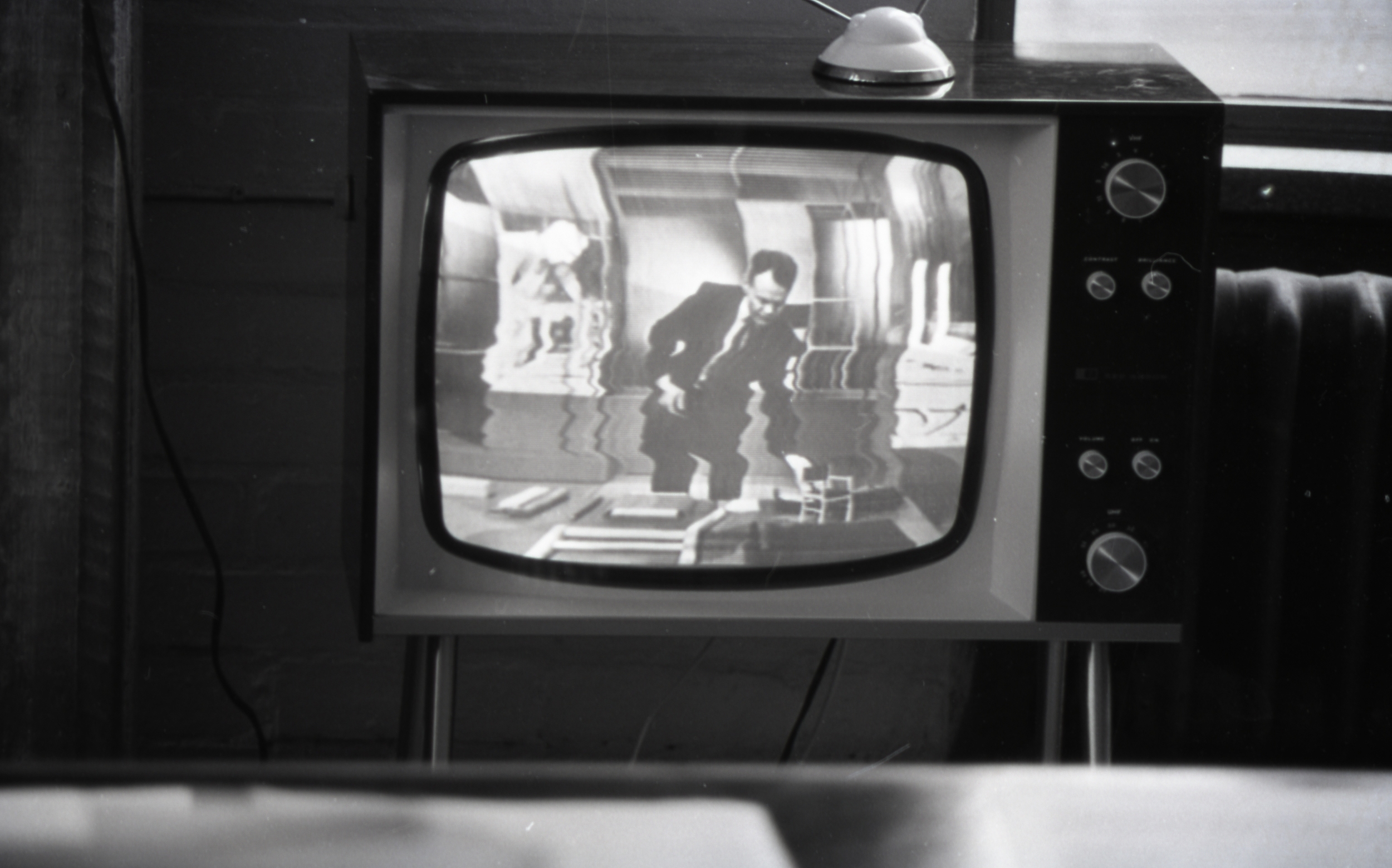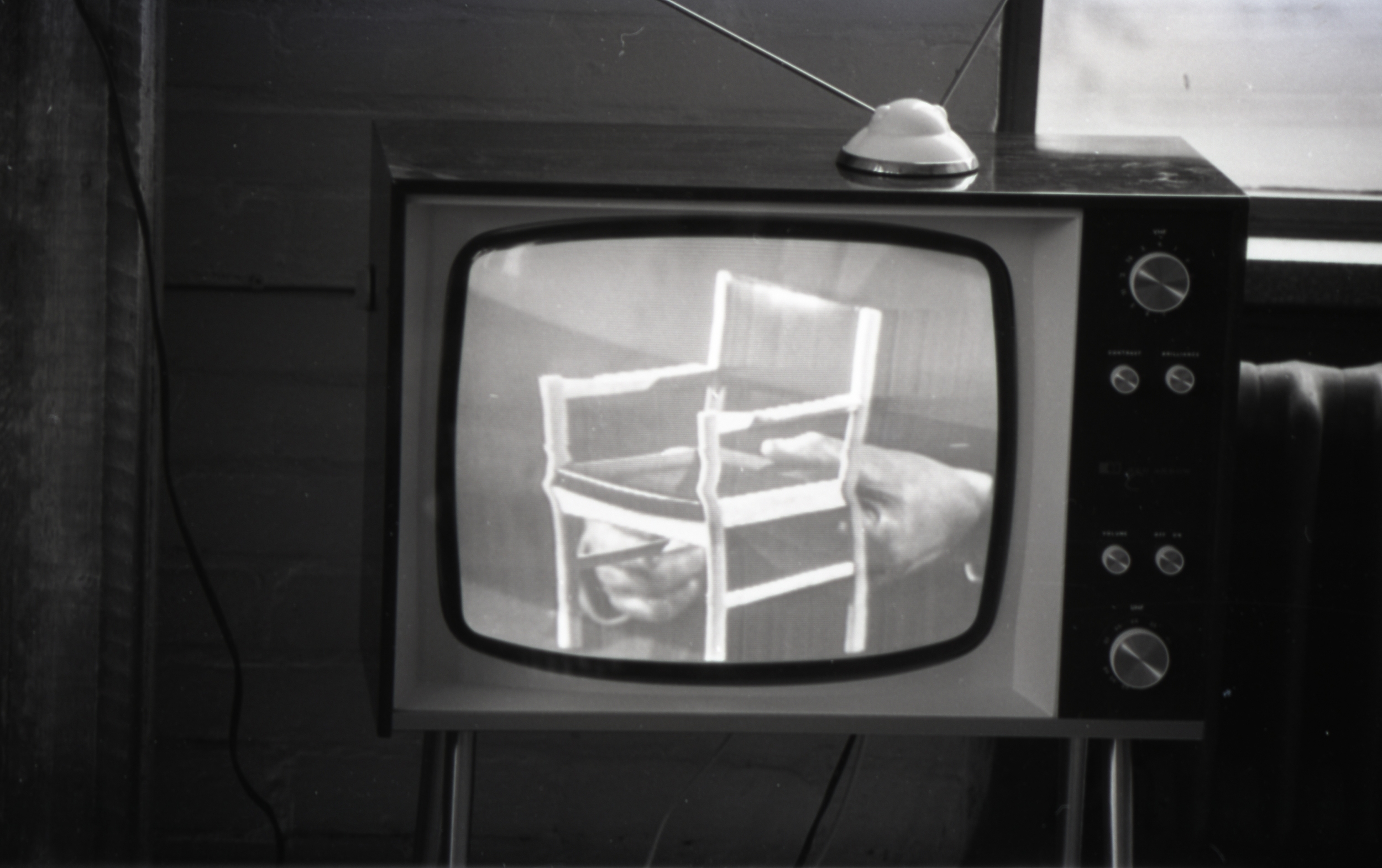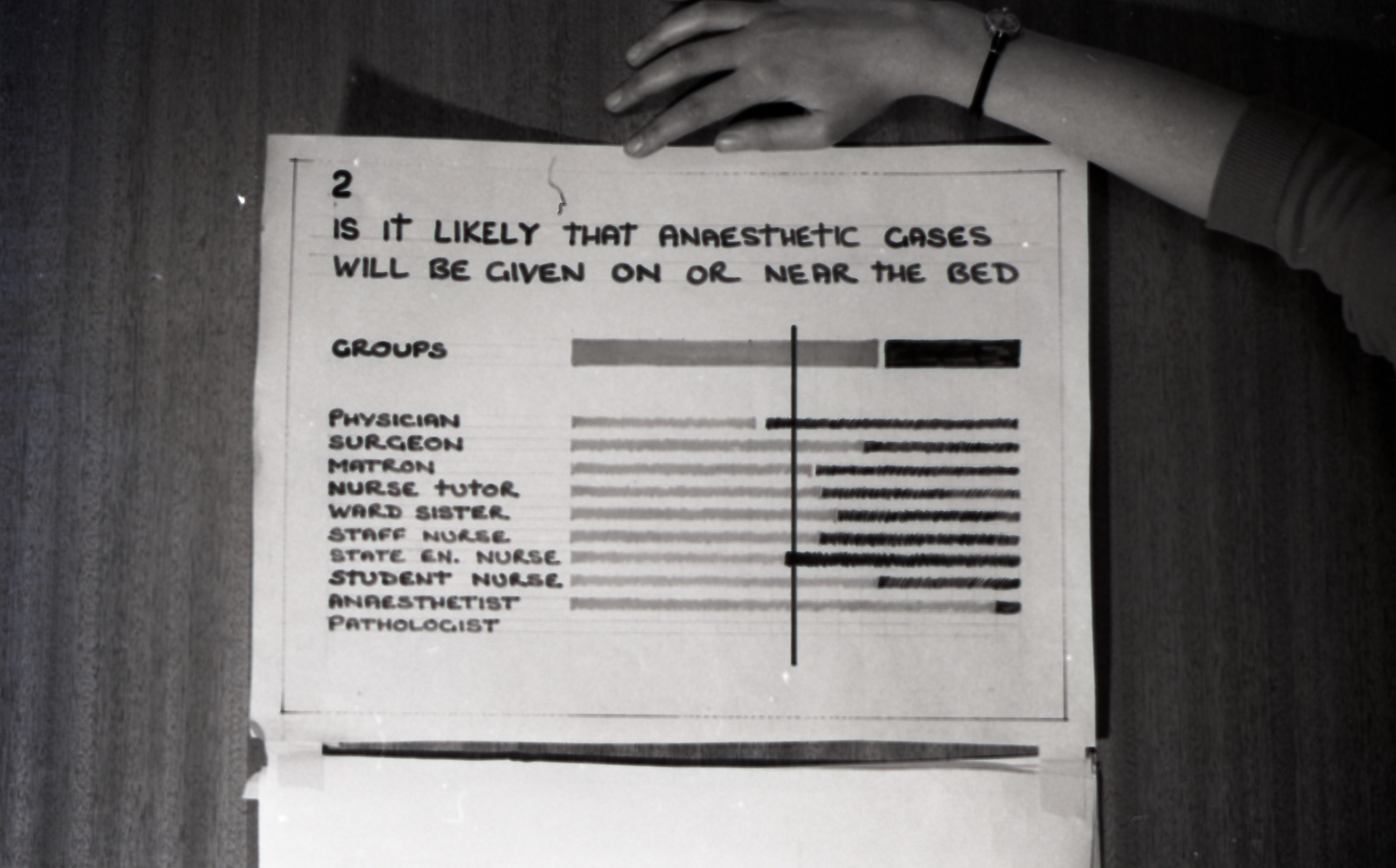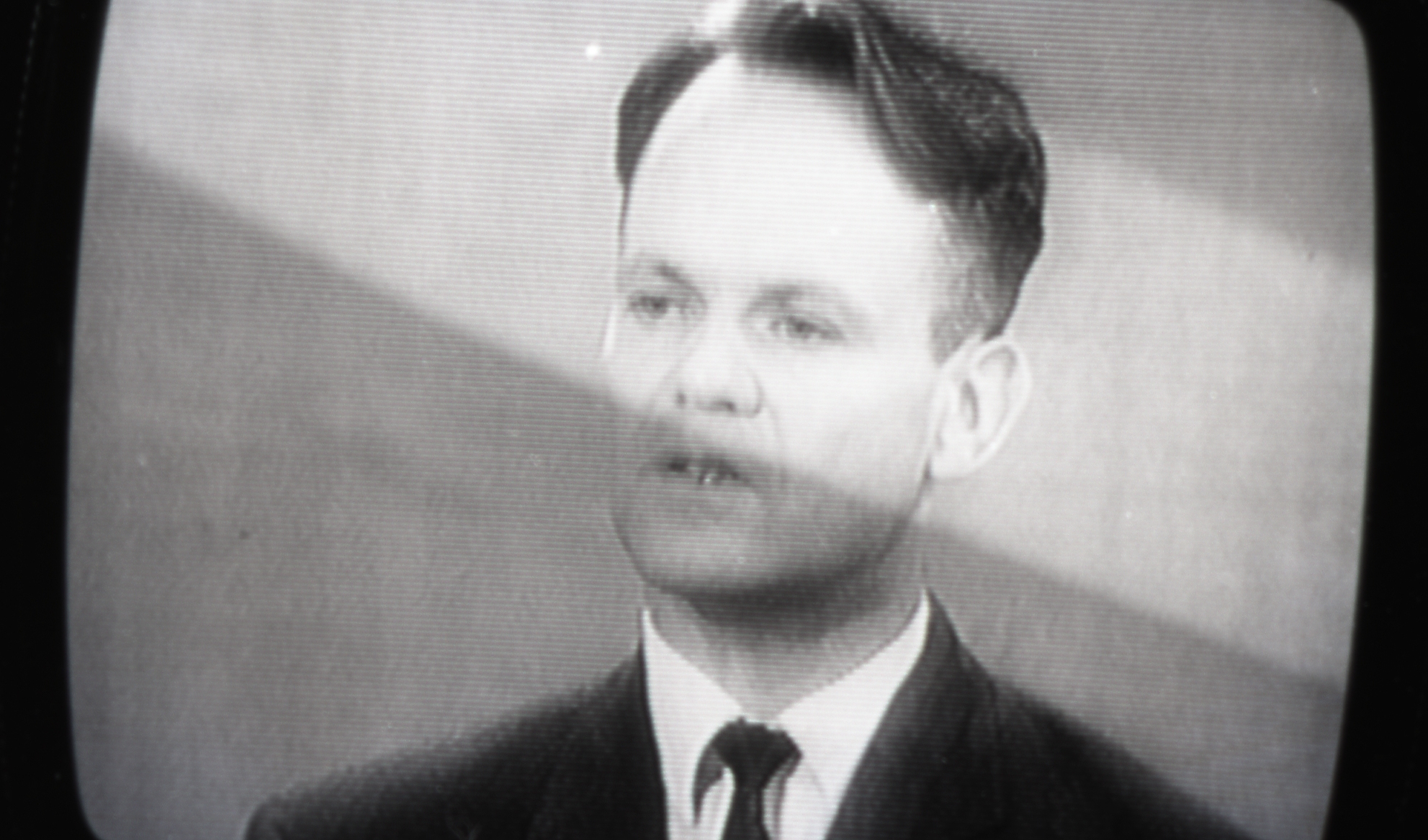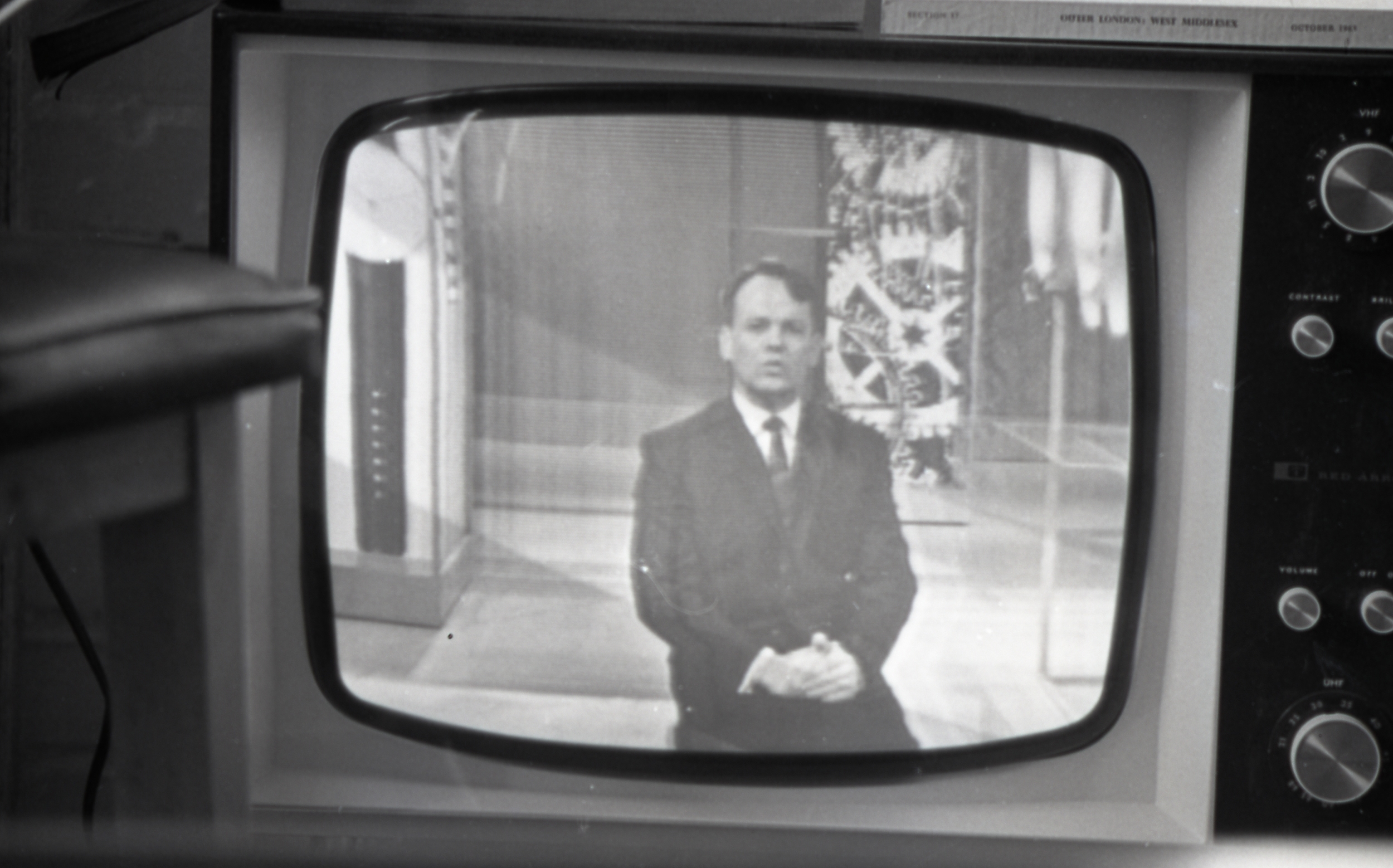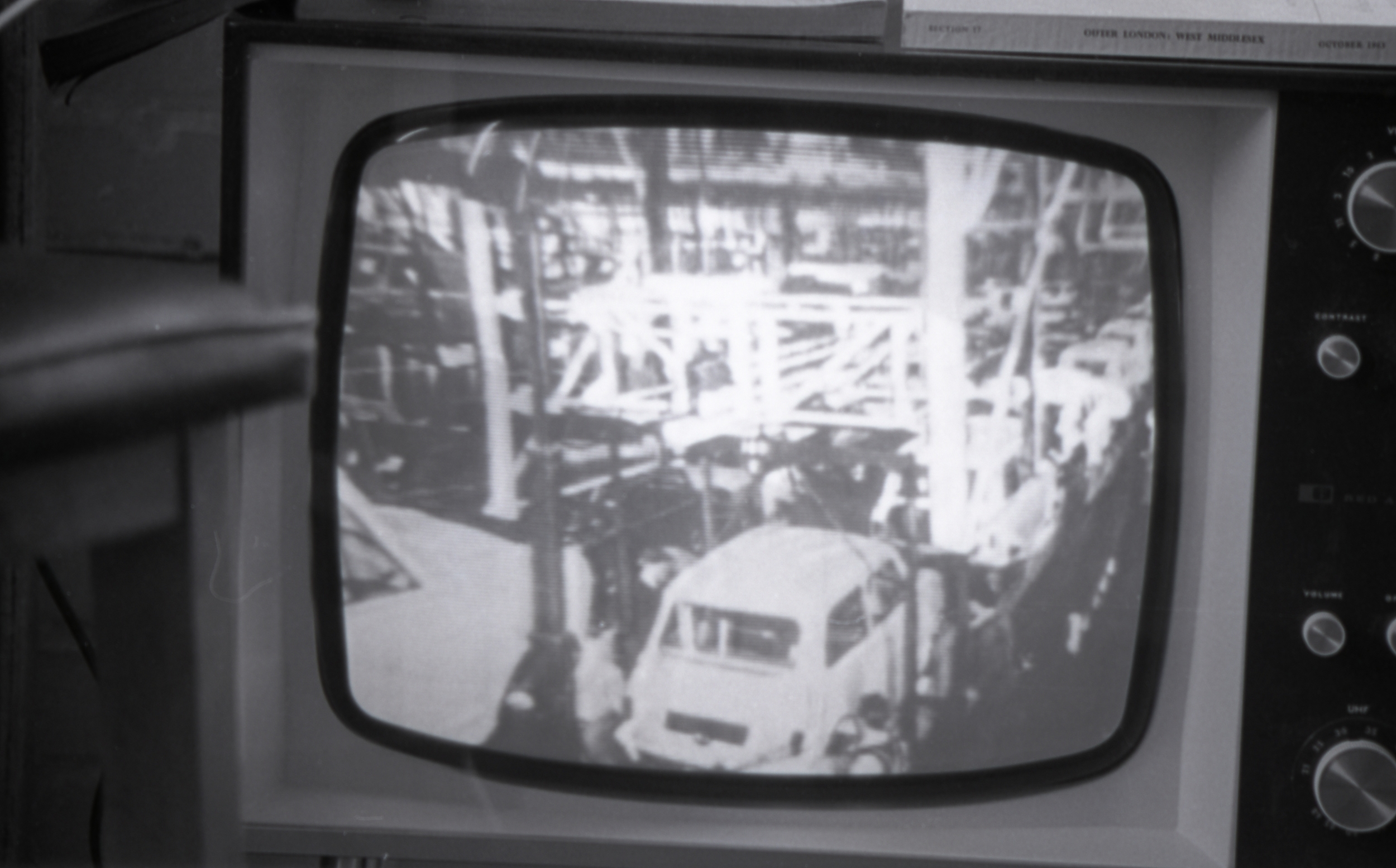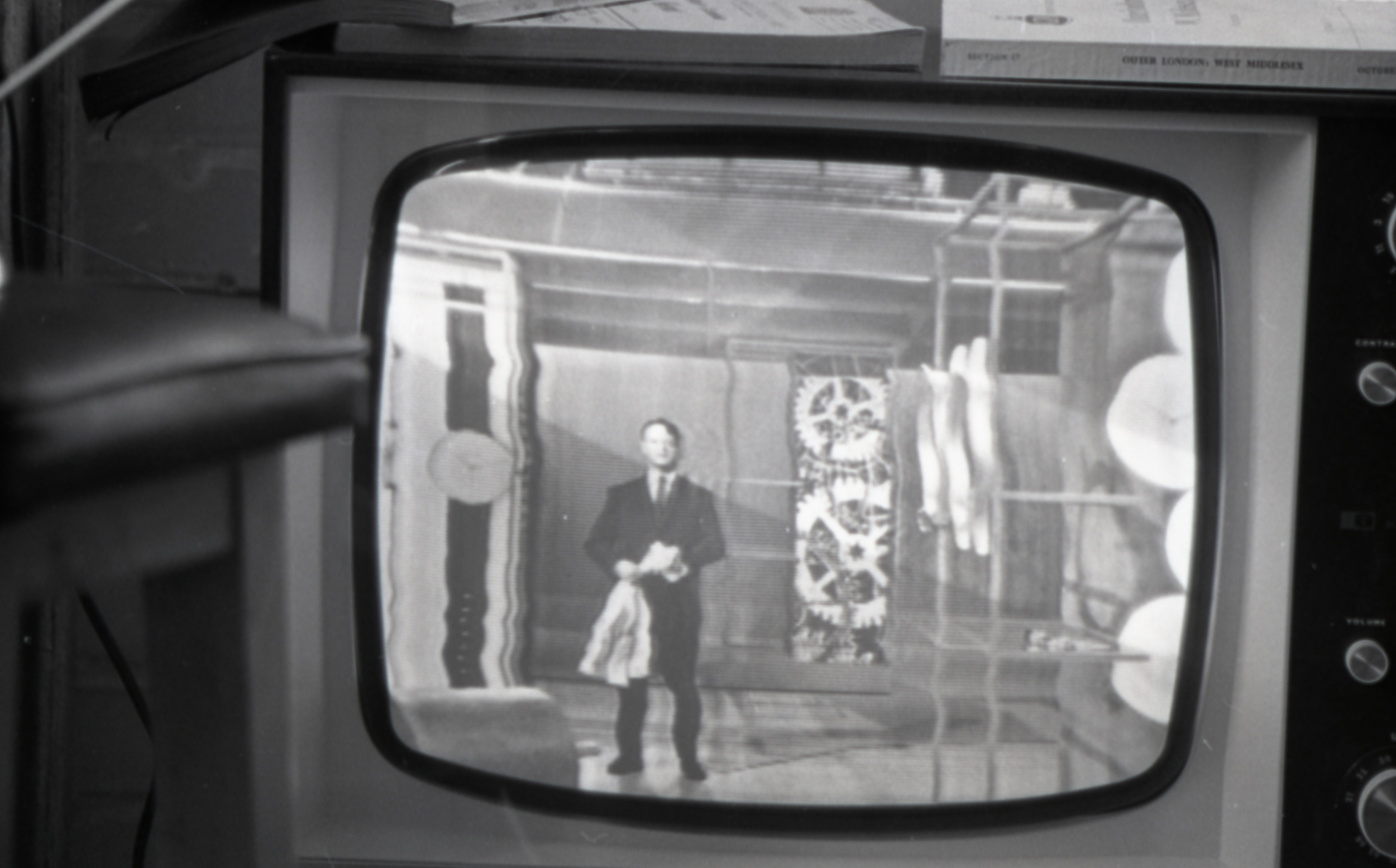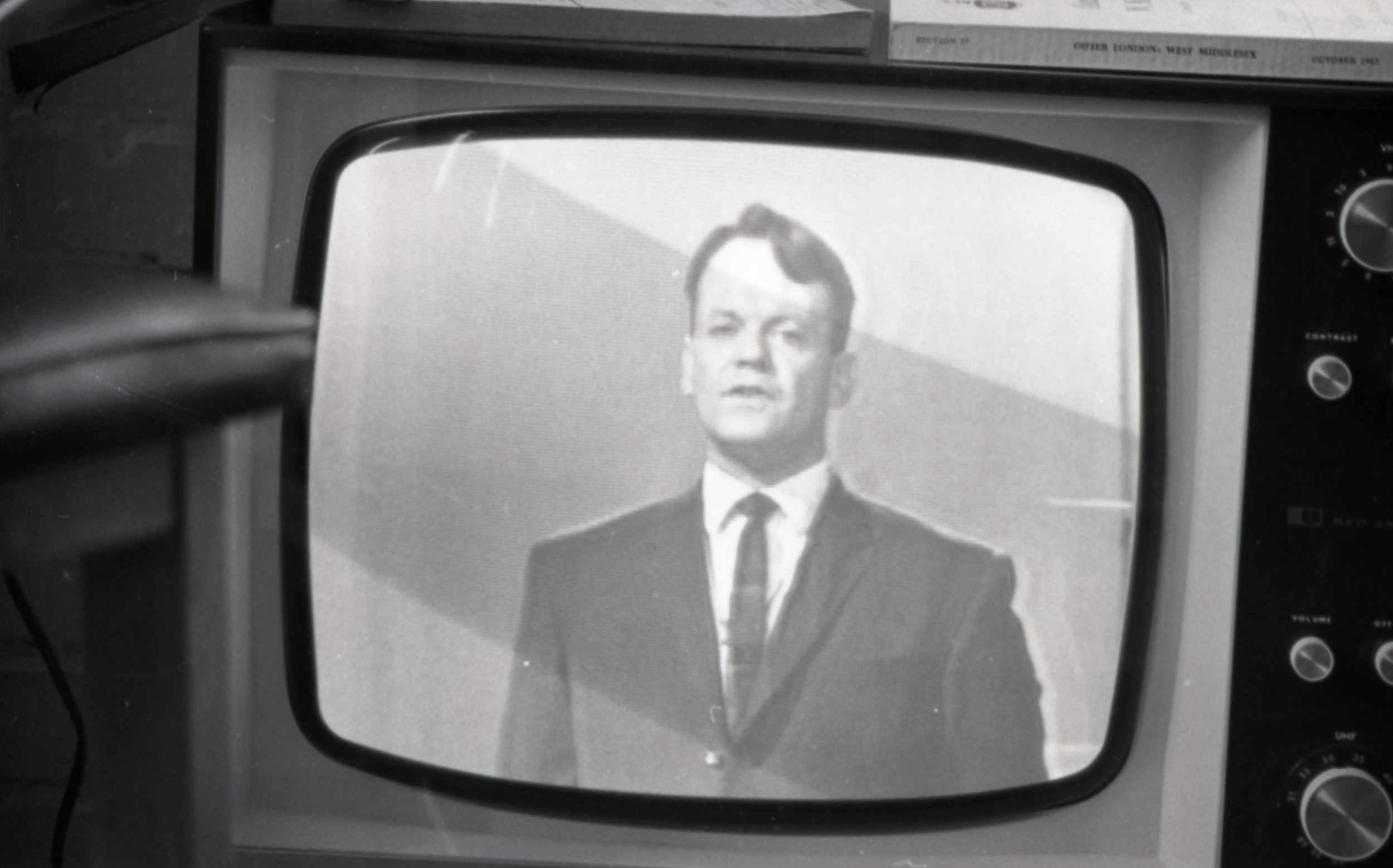It is not known whether any recordings still exist of Archer's six-part schools TV series for Granada, or of the notorious Panorama 'televisual research'.
The L Bruce Archive at the RCA contains a few photographs of a television set during the Granada broadcasts.
The DDR Archive at the V&A has the script for the Panorama programme, and some acrimonious correspondence with Paul Fox of the BBC about the truncation of the planned broadcast and a copy of a letter to the Times on the subject. In both archives are material used for planning and presenting the Panorama programme, including at the V&A a large number of glass-mounted slides for the explanatory graphics.
A bad experience with the Box
The DDR made pioneering use of television, not only to communicate its messages about design, but also as a research tool.
In 1964, Bruce Archer wrote and presented a set of six half-hour programmes for the commercial UK television company Granada's schools programmes, broadcast from 27 April to 15 June. The topics were How the Designer Thinks, The Human Factor, Aesthetics and Fashion, The Means and the Ends, Caveat emptor, and Computers in design.
The same year's BBC Panorama segment was pioneering work. Lawrence (2001:97) has written: 'The idea was certainly novel. Since the advent of regular television broadcasting in Britain in 1953, no such attempt appears to have been made, possibly because researchers doubted their effective autonomy in such an undertaking.' In the event, this lack of autonomy was certainly a problem. Opinions on a number of questions, demonstrated in the programme, were sought from a large sample of people in the hospital service who had been invited to watch. Some 20,000 people in 1,000 hospitals were involved (Cousins 1965:54). According to Lawrence:
Preparation for the programme by the RCA team was meticulous. Cardboard cut-outs of the bed parts to be demonstrated were made, painted grey overall, but with the parts to which attention was being drawn during any particular question picked out in brighter colours. The format of the broadcast was to consist of the questionnaire being read out by Archer, while the relevant part or operation of the bed was demonstrated with the cardboard models. The script was timed to the last second.
The RCA team's hopes were high on the evening of 3rd February 1964 as, throughout the country, nursing, medical and administrative staff gathered around hospital television sets. At the last moment, however, disaster struck in the form of the Soviet Foreign Minister, visiting Britain to celebrate the 40th anniversary of British recognition of the Soviet Union. Panorama secured an interview with the Minister which took half of the time allocated to the bed feature.
Even the truncated programme segment was presented quite differently from anything Archer had intended with 'an initial sequence of a scantily clad model rolling about on a bed.'
A 'Comment' page appeared in the next issue of Design magazine, written by its editor, John Blake:
...television can create a two-way traffic in ideas - can be used, in fact, to collect as well as to transmit information. The possibilities were demonstrated (unsuccessfully in the event) in a recent Panorama programme designed to collect information on basic requirements for hospital beds. The sad outcome of this experiment is now past history...
What is important at this stage is to ensure that the failure of the experiment, due to last minute cuts by BBC staff, should not be used as an excuse for avoiding anything on similar lines in the future. It may be difficult to win back the co-operation of angered doctors and nurses, but the scope for research by television is enormous and is clearly a most valuable method of collecting information on a hitherto impossible scale.
Despite this setback, the RCA did produce a report from the data they had managed to gather: Report No.10, Results of a Television Enquiry on Certain Features of the Hospital Bedstead (Royal College of Art, June 1964). It is not certain what copies remain of this document, which is probably in the partly catalogued archive at the V&A.
Blake, John E. (1964) 'Comment' Design 184 (April 1964) p.25
Cousins, James (1965) 'Research: A general purpose bedstead for hospitals.' Design 195 (March 1965). 52-57. It can be viewed online on the website of the Visual Arts and Data Service.
Lawrence, Ghislaine. (2001) Hospital beds by design: a socio-historical account of the 'King’s Fund Bed', 1960-1975. PhD thesis of the University of London. Available on the British Library Ethos service, ID: uk.bl.ethos.271734. Available online at Archive.org.

